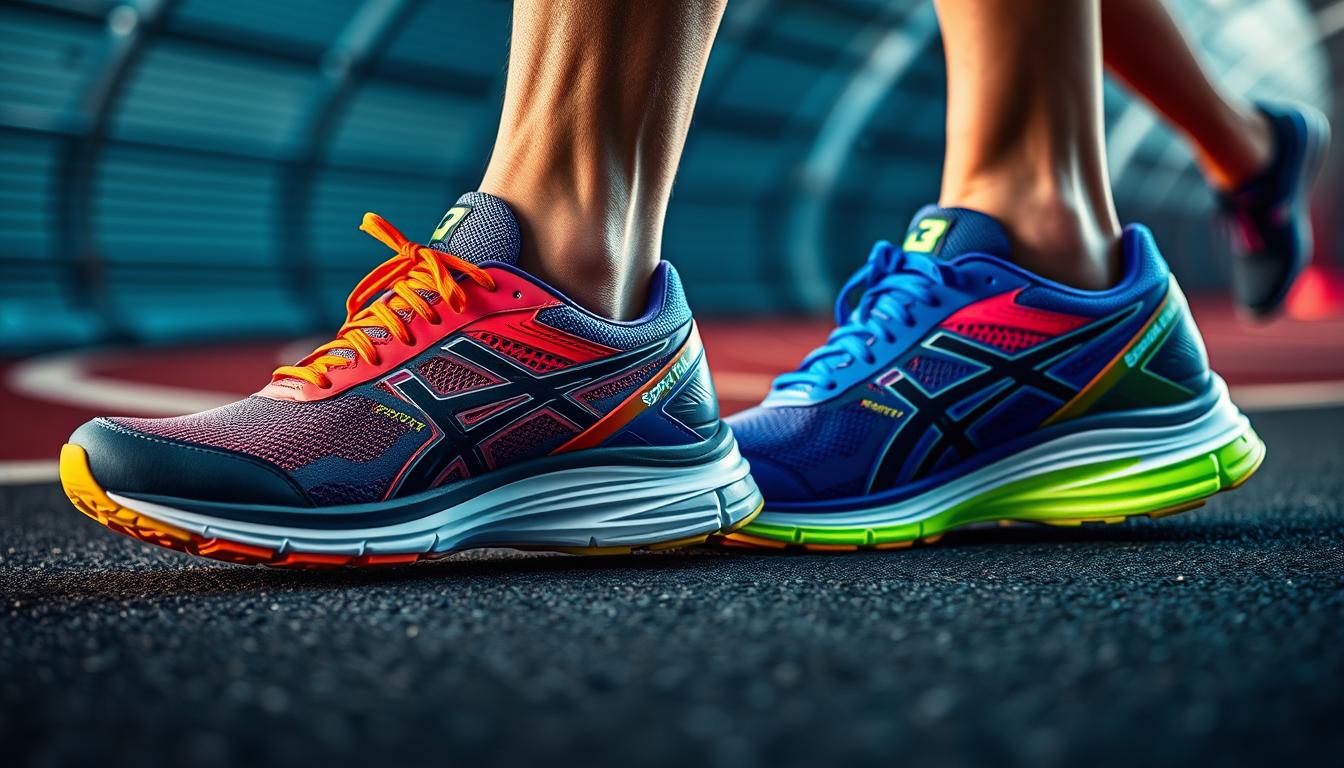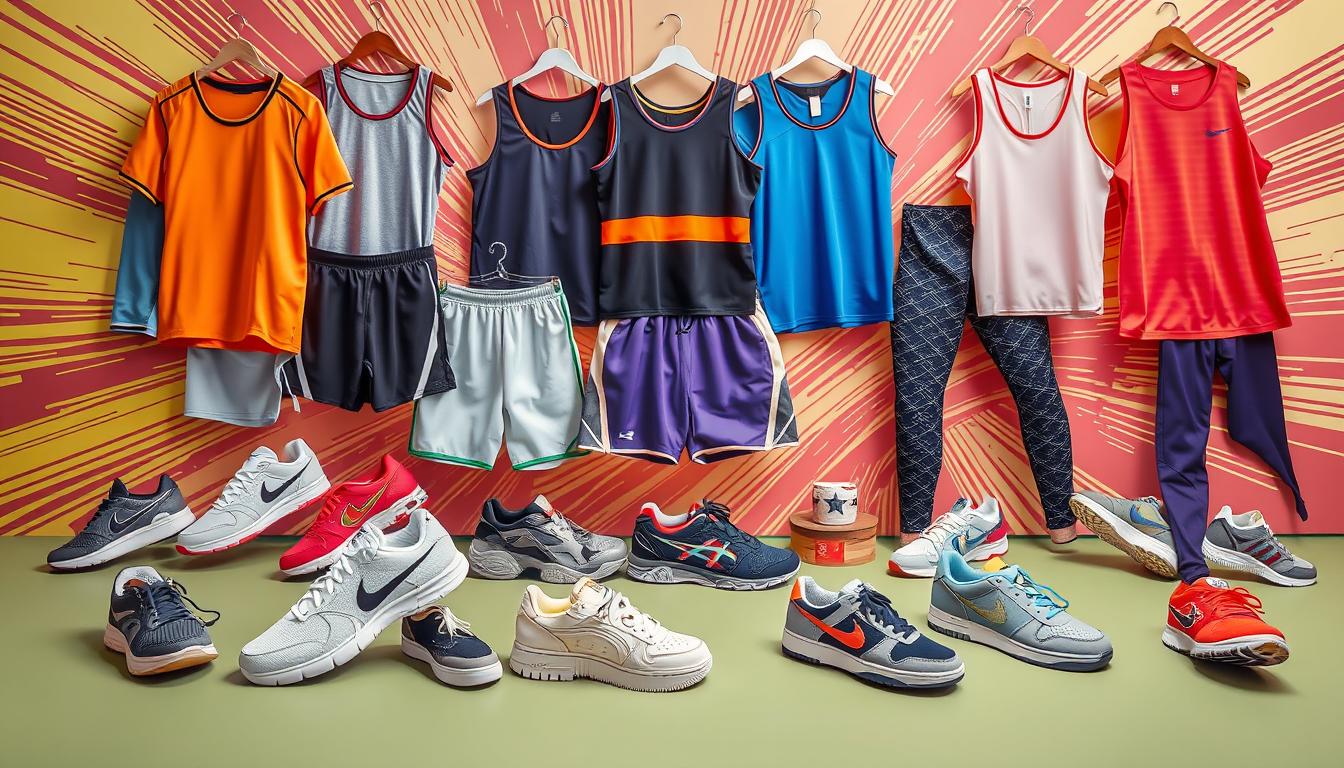We’re excited to share our findings on the best running shoes for marathon runners. We’ve looked at top quality running shoes, durable sneakers, and performance footwear. Finding the perfect shoe can be tough, but we’re here to help.
Marathon runners need the right gear to perform well and stay injury-free. In this article, we explore the best shoes for marathon runners. We’ll look at durable sneakers and performance footwear that offer comfort and support.
Key Takeaways
- Top quality running shoes for marathon runners can improve performance and prevent injuries
- Durable sneakers for long distance running are essential for marathon training
- Performance footwear for marathon training should prioritize comfort and support
- Factors such as cushioning, stability, and style should be considered when choosing a shoe
- Brands like Nike, Brooks, and Saucony offer high-quality options for marathon runners
- Proper shoe fit and maintenance are key for optimal performance and longevity
Why Choosing the Right Running Shoes Matters
When we’re getting ready for a marathon, our running shoes play a big role. The right best shoes for marathon runners can really help us reach our goals. It’s important to pick top-rated marathon running shoes that fit our needs and likes.
Studies show that wearing high-quality running shoes for long distance races can lower injury risk. In fact, switching between two shoe models can cut injury risk by 39%. This shows why it’s smart to have more than one pair of shoes. It lets us break in new ones and gives our bodies time to adjust.
When picking shoes, think about cushioning, support, and stability. Top-rated marathon running shoes often have cool tech like gel cushioning and flywire support. These features help us run better, avoid injuries, and feel more comfortable.
Impact on Performance
A great pair of shoes can really boost our performance. With the right best shoes for marathon runners, we can run faster, longer, and more smoothly. This helps us reach our goals and run better.
Injury Prevention
Injuries are a big worry for runners, but the right shoes can help prevent them. By picking top-rated marathon running shoes with good support and cushioning, we can lower injury risk. This keeps us healthy during our training.
Comfort for Long Distances
Comfort is key for long runs, and the right shoes are essential. With high-quality running shoes for long distance races, we can enjoy a comfy and supportive ride. This is true even on our longest runs.
Key Features to Look for in Marathon Shoes
Choosing the right marathon shoe is key. We look for durable sneakers that are comfortable and supportive. Performance footwear is also important for our performance and experience.
Key features include cushioning, weight, and breathability. The fit and support are also critical. A good shoe balances these for a comfortable ride.
Cushioning Technology
Cushioning is vital for comfort and support. We seek shoes with advanced systems to absorb impact and offer a smooth ride.
Weight and Breathability
Weight and breathability matter too. We prefer lightweight, breathable shoes to keep our feet cool and dry.
Fit and Support
Fit and support are essential. We look for shoes that are comfortable and supportive, providing stability and protection.
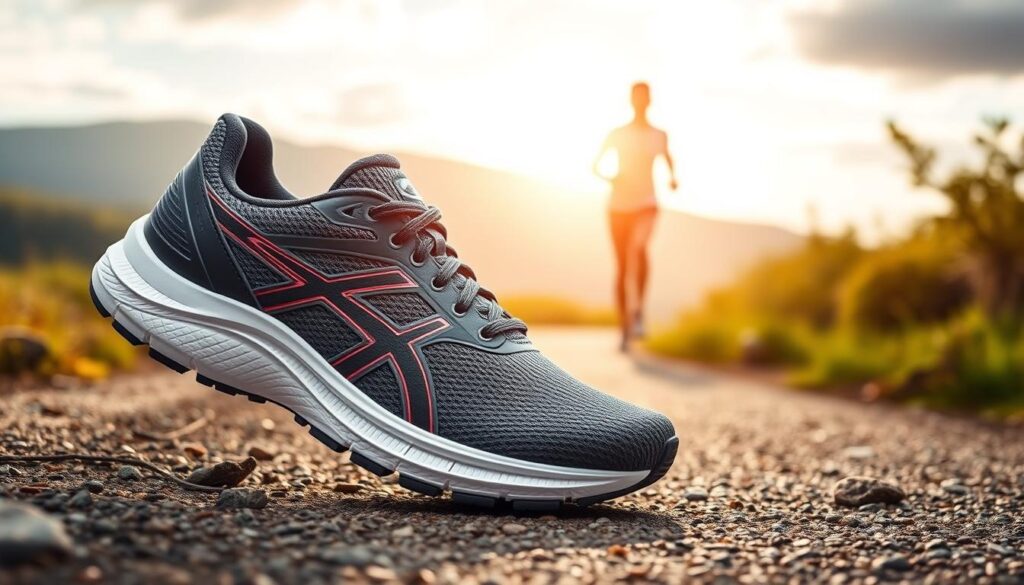
Popular marathon shoes include the Nike Alphafly 3, Asics Metaspeed Sky Paris, and Brooks Hyperion Elite 4. They offer cushioning, support, and breathability for top performance.
| Shoe Model | Weight | Stack Height | Drop | Price |
|---|---|---|---|---|
| Nike Alphafly 3 | 7.8 oz (men), 6.2 oz (women) | 40–32 mm | 8 mm | $285 |
| Asics Metaspeed Sky Paris | 6.5 oz (unisex) | 39.5–34.5 mm | 5 mm | $250 |
| Brooks Hyperion Elite 4 | 7.8 oz (unisex) | 40–32 mm | 8 mm | $250 |
Best Brands for Marathon Running Shoes
Choosing the right marathon shoe is key. Top brands like Nike, ASICS, and Brooks are leaders. They offer a variety of models for different needs and tastes. These brands are known for their high-quality running shoes for long distance races, giving runners the support and comfort they need.
When looking for best shoes for marathon runners, cushioning, stability, and fit are important. Nike and ASICS are favorites for their tech and comfort. Brooks is known for supportive and stable shoes, perfect for long runs. For more on the best marathon running shoes, check out marathon running shoes reviews.
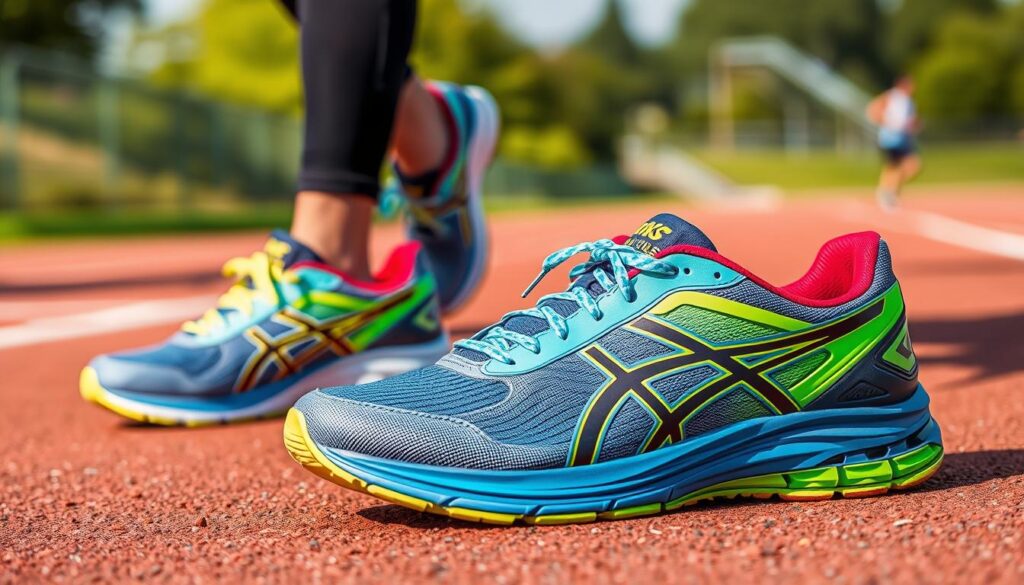
Look for shoes with the right balance of cushioning and responsiveness. Also, a comfortable and secure fit is essential. The best shoes for marathon runners vary based on personal needs and running terrain. By choosing a reputable brand, runners can find the perfect high-quality running shoes for long distance races to help them perform at their best.
Top-Reviewed Running Shoes for Marathon Training
Looking for the best shoes for marathon runners? There are many top choices out there. We’ve looked at the Saucony Triumph 19, Hoka One One Bondi 8, and Adidas Ultraboost. These are all high-quality options for long distance races.
These shoes have great features like cushioning, stability, and style. For example, the Saucony Triumph 19 has a neutral, high-cushion design. It’s perfect for runners with a neutral gait.
Here are some key features to consider when choosing the best shoes for marathon runners:
- Cushioning: Look for shoes with adequate cushioning to absorb the impact of each step.
- Stability: Consider shoes with stability features, such as support for overpronation or supination.
- Style: Choose shoes that fit your personal style and preferences.
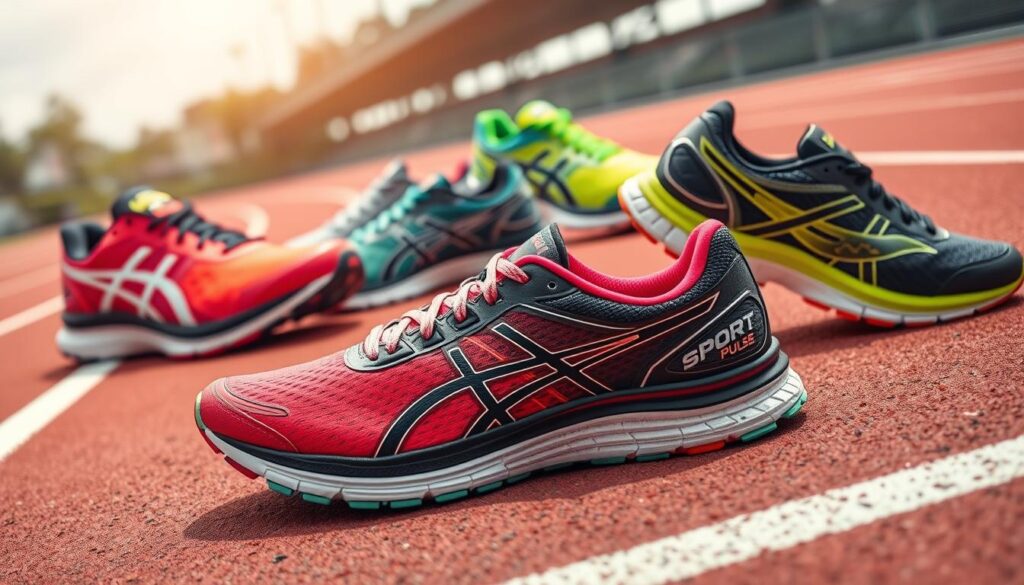
Finding the right shoes for marathon running depends on your personal needs. Try on different shoes and read reviews from other runners. This will help you find the perfect fit.
| Shoe Model | Weight | Heel-To-Toe Drop |
|---|---|---|
| Saucony Triumph 19 | 10.5 oz | 8mm |
| Hoka One One Bondi 8 | 11.6 oz | 4mm |
| Adidas Ultraboost | 10.9 oz | 10mm |
Comparing Stability vs. Neutral Shoes
Choosing the right marathon shoe is key. We look for durable sneakers that support and comfort our feet. The best shoes for marathon runners match their foot type and running style.
Stability shoes help runners with low arches and overpronation. Neutral shoes are for those with normal to high arches. A study showed stability shoes can prevent pronation injuries in runners.
When picking between stability and neutral shoes, consider these factors:
- Foot type: Runners with low arches or flat feet need stability shoes. Those with high arches prefer neutral shoes.
- Running style: Runners who overpronate or supinate need stability shoes for support.
- Comfort: The best shoes for marathon runners are comfortable and fit well.
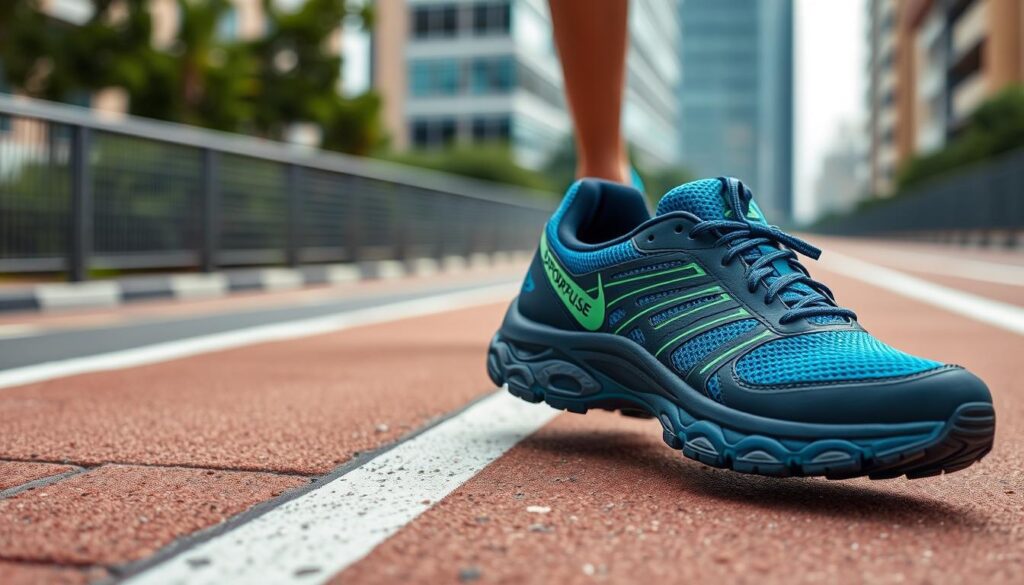
In conclusion, the choice between stability and neutral shoes depends on your foot type and running style. By choosing the right shoe, runners can perform better and avoid injuries. Whether you’re looking for durable sneakers or performance footwear, there’s a shoe for you.
| Shoe Type | Foot Type | Running Style |
|---|---|---|
| Stability | Low arches, flat feet | Overpronation |
| Neutral | Normal to high arches | Neutral running style |
Importance of Proper Shoe Fit
Proper shoe fit is key for marathon runners. It ensures comfort, boosts performance, and prevents injuries. We suggest trying on high-quality running shoes for long distance races for the best fit. A study found that 57% of running injuries come from bad shoe fit, highlighting the need for a good fit.
When trying on shoes, consider these factors:
- Measuring foot size accurately
- Trying on shoes at the end of the day when feet are at their largest
- Wearing the same type of socks you plan to wear during the marathon
Top-rated marathon running shoes come with advanced tech like cushioning and support. These features improve your running experience. Investing in best shoes for marathon runners can lower injury risks and boost your performance.
Research shows that the right running shoes can cut injury risks by up to 50%. With prices from $100 to $200, finding deals is important for those on a budget.
| Shoe Type | Features | Benefits |
|---|---|---|
| Stability Shoes | Advanced support systems | Reduced risk of overpronation and injury |
| Neutral Shoes | Cushioning and flexibility | Enhanced comfort and performance |
The Role of Shoe Drop in Marathon Running
When training for marathons, the shoe drop is key. It’s the height difference between the heel and toe. This difference affects how comfortable and effective you’ll be. We’ll look at the good and bad of different drop levels and how to find the right one for you.
What is Shoe Drop?
Shoe drop is measured in millimeters, from 0 mm to 15 mm. Most running shoes have a 10 mm drop. But, many are now choosing lower drops, like 0 mm or 4 mm, for a more natural stride.
Finding the Ideal Drop for You
Finding the right drop depends on your running style, foot type, and what you like. For example, those with Achilles tendinitis might prefer higher drops. But, those with posterior ankle impingement might do better with lower drops. When picking best shoes for marathon runners, think about how the drop will affect your comfort and performance.
| Drop Level | Characteristics |
|---|---|
| Zero Drop (0 mm) | Promotes natural running stride, can be beneficial for runners with strong foot muscles |
| Low Drop (1-4 mm) | Provides a balance between cushioning and support, suitable for runners with mild foot issues |
| Mid Drop (5-8 mm) | Offers a mix of support and cushioning, ideal for runners with moderate foot issues |
| High Drop (8+ mm) | Provides maximum support and cushioning, suitable for runners with severe foot issues or those who need extra support |
Seasonal Buying Guide for Running Shoes
Choosing the right top-rated marathon running shoes depends on the season. Summer shoes need to be light and breathable. Winter shoes must be warm and have good grip. We’ll look at the best shoes for each season, focusing on high-quality running shoes for long distance races.
Summer shoes are light and let air in to keep your feet cool. Winter shoes are warm and have good grip for snow and ice. Spring and fall shoes aim to balance these, keeping you comfortable in changing weather.
For example, the Hoka Challenger 7 GTX is great for winter. The Brooks Divide 5 is good for all seasons. Think about the shoe’s weight, drop, and tread when choosing. The right high-quality running shoes for long distance races can improve your performance and prevent injuries.
For more tips on athletic footwear, check out this resource. With the right shoes, you can conquer any season and reach your running goals.
| Season | Recommended Shoe Features |
|---|---|
| Summer | Lightweight, breathable materials |
| Winter | Water-resistant uppers, aggressive tread patterns |
| Transition | Balanced features for breathability and protection |
How to Break in New Shoes for Marathons
Breaking in durable sneakers for long distance running is key for a comfy marathon. Start with short runs of 3 to 5 miles at a slow pace. This lets your feet get used to the new performance footwear for marathon training and avoids discomfort or injury.
Watch how your new shoes feel as you break them in. If they’re too uncomfortable or cause blisters, it’s time to return them. Many running stores have good return policies for shoes that haven’t been worn much. Finding the right fit and feel is vital for best shoes for marathon runners.
- They feel comfortable and supportive during short runs
- You’ve completed several short runs without experiencing discomfort or pain
- You’ve allowed your feet to adjust to the new shoes over a period of 2 to 3 weeks
By following these tips and paying attention to your shoes, you can have a smooth break-in. This way, you’ll be ready for your next marathon in your newperformance footwear for marathon training.
Maintenance Tips for Your Running Shoes
To get the most out of your top-rated marathon running shoes, it’s key to follow proper maintenance tips. This includes cleaning techniques and knowing when to replace your high-quality running shoes for long distance races. By doing so, you can prevent common problems such as odor and wear. This ensures your best shoes for marathon runners stay comfortable and supportive during your training.
Experts say running shoes should be replaced every 300 to 500 miles. Using the right shoe for the right activity can extend shoe lifespan. For example, trail running shoes can wear out 50% faster on road surfaces. You can find more information on proper shoe maintenance and replacement to keep your shoes in top condition.
- Storing shoes in a cool, dry place to prevent accelerated degradation of materials
- Avoiding excessive moisture exposure to reduce midsole life reduction
- Using proper lacing techniques to reduce unnecessary wear on the upper
By following these tips, you can extend the life of your running shoes and prevent discomfort or injury. Always prioritize comfort and support when selecting your top-rated marathon running shoes. And don’t hesitate to replace them when necessary to ensure optimal performance.
Real Runner Testimonials
We’ve reached the end of our search for the best running shoes for marathon runners. Now, we’re excited to share real stories from runners who found success with their shoes.
Listening to those who have run 26.2 miles can give us great insights. They tell us about the durable sneakers for long distance running and performance footwear for marathon training that really help.
Stories of Marathon Success
“The Asics Novablast 4 shoes changed my game. Their responsive cushioning and light design helped me stay strong during training. I felt full of energy and confidence in these shoes.” – Emily, Boston Marathon finisher.
Common Favorites Among Runners
Many marathon runners love the best shoes for marathon runners. They talk about the Brooks Hyperion Max 2, Hoka Clifton 8, and Saucony Ride ISO 2. These shoes get high praise for their comfort, support, and how they boost performance.
As you start your marathon journey, remember the right shoes are key. By listening to other runners, you’ll find the perfect durable sneakers for long distance running. They’ll help you reach the finish line.
